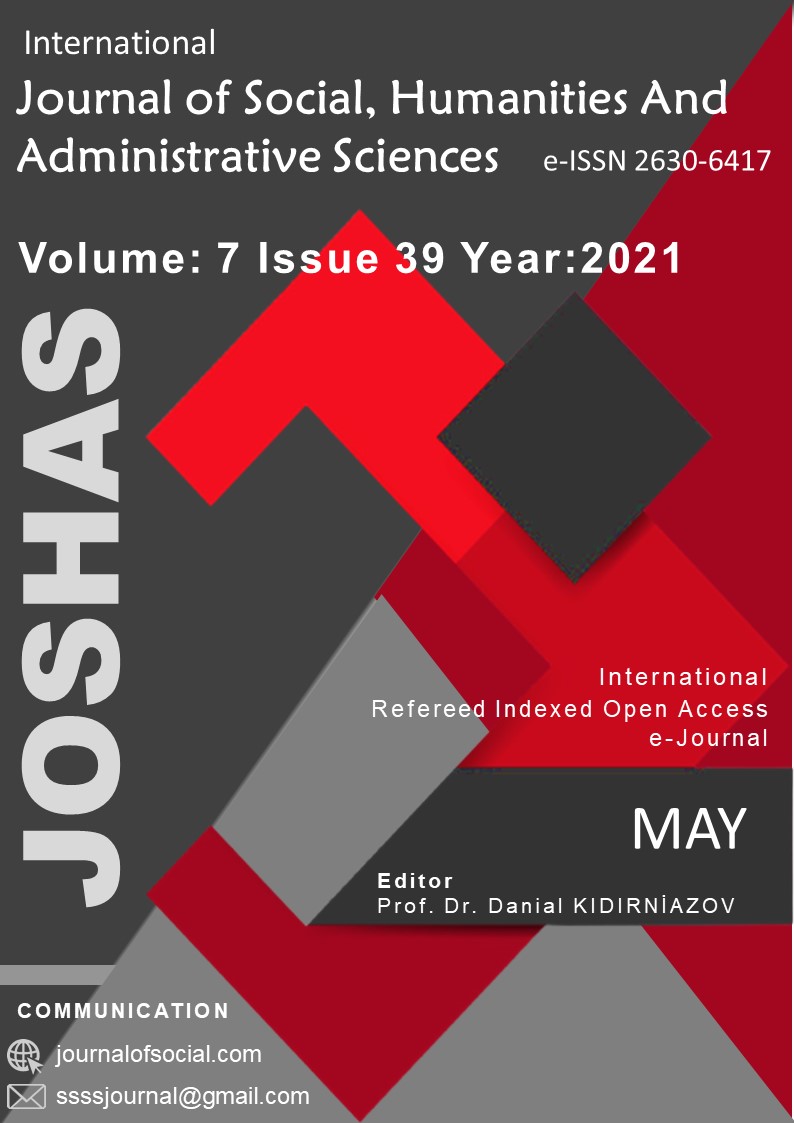Author :
Abstract
Uygulama Öğretmenliği, öğretmenliğin bir uzantısı olmakla birlikte, profesyonel bir yaklaşımı da beraberinde getirmektedir. Bu profesyonel yaklaşım çerçevesinde kullanılmak üzere bu araştırmada, uygulama öğretmenlerinin, öğretmenlik uygulamaları sürecine ilişkin yeterliliklerini ölçmeyi amaçlayan beşli likert tipinde bir yeterlilik aracı geliştirilmiştir. Aynı araştırmacı tarafından daha önce 100 maddeli ve dokuz alt boyutlu olarak geliştirilmiş olan bu aracın yapılan uyarlama aşamasında, 719 uygulama öğretmenine yeniden uygulanmış ve 20 maddelik son versiyonu oluşturulmuştur. Bu aşama sonucunda, Uygulama Öğretmeni Yeterlilik Ölçeği; Sınıf Yönetimi (.934), Gözlem (.898), Mesleki Rehberlik (.863) ve Uygulamaya Hazırlık (.808) olmak üzere dört alt boyuttan oluşmuştur ve her boyutta beşer madde yer almıştır. Ölçme aracının tamamı için ulaşılan iç tutarlılık katsayısı .944 olarak belirlenmiştir. Elde edilen bu değerlere göre, Uygulama Öğretmeni Yeterlilik Ölçeği’nin, Milli Eğitim Bakanlığı’na bağlı her kademe ve branşta, uygulama öğretmenliği görevini üstlenen, öğretmenlerin, “uygulama öğretmenliği yeterliliği” düzeyini ölçmede geçerli ve güvenilir bir araç olduğu sonucuna ulaşılmıştır.
Keywords
Abstract
Mentoring is extension of teaching but also brings a professional approach. In order to be used within the framework of this professional approach a five-point Likert efficacy scale has been developed in this study, which aims to measure the efficacy of mentor teachers regarding the teaching practice process. In the adaptation phase of this scale, which was previously developed by the same researcher with 100 items and nine sub-dimensions, it was re-applied to 719 mentor teachers and the final version of 20 items was reached. At the end of this stage, the Mentor Efficacy Scale; It consists of four sub-dimensions: Classroom Management (.934), Observation (.898), Vocational Guidance (.863) and Preparation for Practice (.808), and each dimension has five items. The internal consistency coefficient reached for the whole measurement tool was determined as .944. According to these values, it was concluded that the Mentor Efficacy Scale is a reliable measurement tool to measure the level of "mentoring efficacy" of teachers who work as mentors in all levels and branches of the Minestry of Naional Education.
Keywords
- Akyıldız, S. (2018). Uygulama öğretim elemanları ile uygulama öğretmenlerinin görev vesorumluluklarını
- Akyıldız, S. (2018). Uygulama öğretim elemanları ile uygulama öğretmenlerinin görev vesorumluluklarını yerine getirme düzeylerinin incelenmesi. Asya Öğretim Dergisi, 6(1), 21-39.
- Allinder, R. (1994). The relationship between efficacy and the instructional practices of special education teachers and consultants. Teacher Education and Special Education, 17, 86-95.
- Bandura, A. (1986). Social foundations of thought and action. Upper Saddle River, NJ: Prentice Hall Bandura A. (1997). Self-efficacy: The exercise of control. New York: W.H. Freeman and Co.
- Bektaş M, Ayvaz Can A. (2019). Sınıf Öğretmenlerine Uygulama Öğretmenliği Görev ve Sorumluluklarının Kazandırılması. Eğitim ve Bilim. 44 (2019) Sayı 200 23-45.
- Bentler, P.M. (1990), "Comparative Fit Indexes in Structural Models," Psychological Bulletin, 107 (2), 238-46.
- Büyüköztürk, Ş. (2012). Sosyal bilimler için veri analizi el kitabı. Ankara: Pegem Akademi.
- Caughlan, S., Jiang H. (2014). Observation and Teacher Quality: Critical Analysis of ObservationalInstruments in Preservice Teacher Performance Assessment. https://doi.org/10.1177/0022487114541546. 5 Ocak 2020 tarihinde erişilmiştir.
- Coladarci, T., & Breton, W. (1997). Teacher efficacy, supervision, and the special educationresource room teacher. Journal of Educational Research, 90, 230-240.
- Coldwell, M. (2017). Exploring the influence of professional development on teacher careers: A pathmodel approach. Teaching and Teacher Education, 61, 189–192 https://doi.org/10.1016/j.tate.12.06.2020.
- Çokluk, Ö, Şekercioğlu, G. ve Büyüköztürk, Ş. (2010). Sosyal bilimler için çok değişkenliistatistik spss ve lisrel uygulamaları. Ankara: Pegem Akademi
- Feiman-Nemser, S. (2012). Beyond solo teaching. Educational Leadership, 69, 10–16. http://www.ascd.org/publications/educational-leadership, 15 Mart 2020 tarihinde ulaşılmıştır.
- Gray, L., & Taie, S. (2015). Public school teacher attrition and mobility in the first five years:Results from thefirst through fifth waves of the 2007-08 Beginning Teacher Longitudinal Study. National Center for Education Statistics.
- Güzeller, C.O., Aksu, G., & Eser, M. T. (2015) Developing of facebook addiction scale for Turkish adolescents, International Journal Of Computer Sciences, vol.3, no.3226036, 1-9.
- Ingersoll, R. M., & Strong, M. (2011). The impact of induction and mentoring programs forbeginning teachers: A critical review of the research. Review of Educational Research, 81(2), 201-233.
- Kline, R. B. (1998). Principles and Practice of Structural Equation Modeling. New York: The Guilford Press.
- Madison, J., Watson, K., & Knight, B. A. (1994). Mentors and preceptors in the nursingprofession. Contemporary Nurse, 3(3), 121-126.
- Marsh, H. W., & Hocevar, D. (1985). Application of confirmatory factor analysis to the study of self-concept: First- and higher order factor models and their invariance across groups. Psychological Bulletin, 97, 562-582.
- Ogunu, M. (2000). Introduction to educational management benin city. Nigeria: Mabogun PublishersOrganisation for Economic Co-operation and Development (2014). TALIS 2013 results: Aninternational perspective on teaching and learning. http://www.keepeek.com/Digital-Asset-
- Management/oecd/education/talis-2013 results_9789264196261-en. adresinden erişildi. 15.05.2020
- Riggs Irish , M (2000) Impact of Training and Induction Activities upon Mentors as IndicatedthroughMeasurement of Mentor Self-Efficacy. 14p.PUB Reports Research (143)EDRS PRICEMF01/PC01 Plus Postage.
- Ronfeldt, M. (2012). Where should student teachers learn to teach? Effects of field placement school characteristics on teacher retention and effectiveness. Educational Evaluation and Policy Analysis.
- Sutton, R. E., & Wheatley, K. F. (2003). Teachers’ emotions and teaching: A review of theliterature and directions for future research. Educational Psychology Review, 15(4), 327-358.
- Tabachnick, B. G., & Fidell, L. S. (2007). Using Multivariate Statistics (5th ed.). Upper Saddle River, NJ: Pearson Education, Inc.
- Ullman, J. B. (2001). Structural equation modelling. In B. G. Tabachnick & L. S. Fidell (Eds.), Using Multivariate Statistics (4th ed.). Boston: Allyn and Bacon.
- Yalın Uçar, M. (2017). Uygulama öğretmenlerinin görev, rol ve eğitim gereksinimlerine ilişkin algıları. Hacettepe Üniversitesi Eğitim Fakültesi Dergisi, 32(1), 46-62. doi:10.16986/HUJE.2016015870
- Yüksek Öğretim Kurumu. (1998). Fakülte-okul işbirliği. 12.09.2018 tarihinde erişildi. https://www.yok.gov.tr/Documents/Yayinlar/Yayinlarimiz/Fakulte-Okul-Isbirligi.pdf





